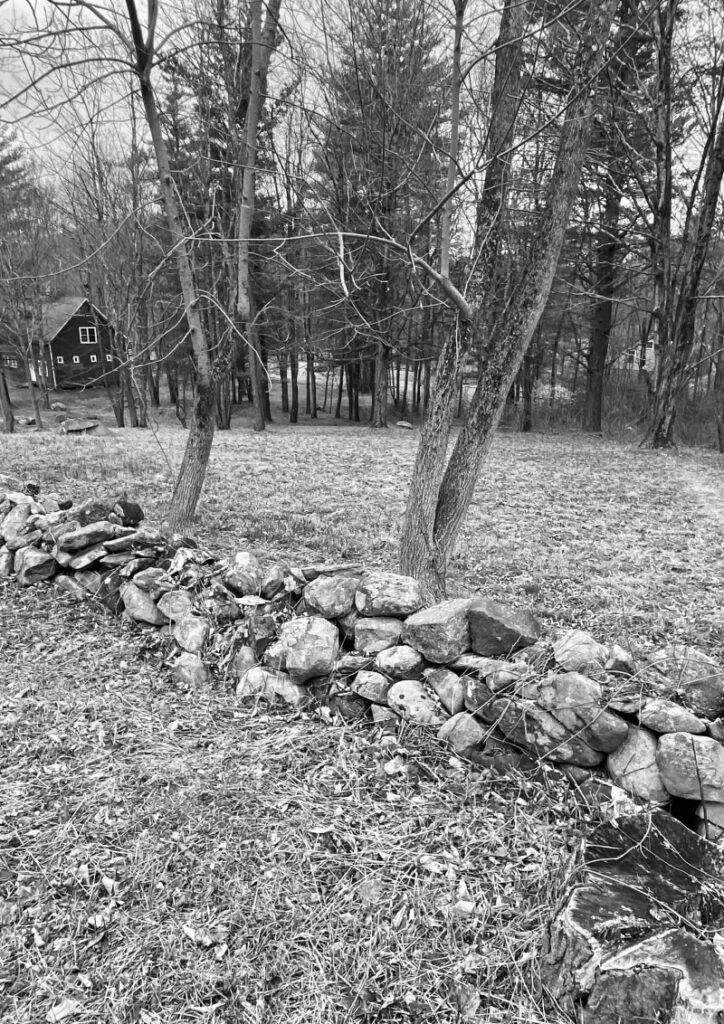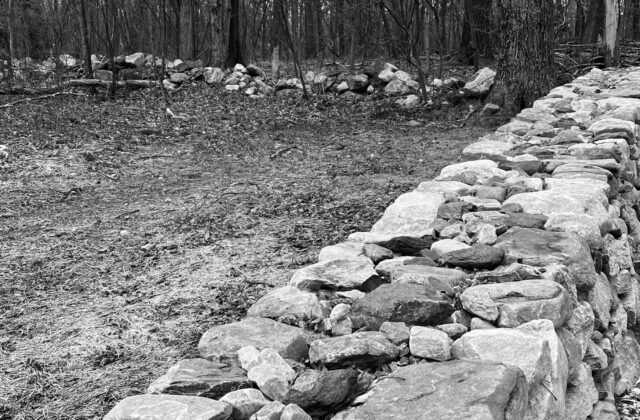Stone Walls – Built to Last the Test of Times
It’s Only Natural
By Jude Mead
If stonewalls could talk, they would have centuries of stories to tell and would reveal a wealth of history. According to Susan Allport, author of “Sermons in Stone,” stonewalls date back to the agricultural era of the late 1700s. “Stonewalls have a checkered past in terms of how they were regarded in different times,” writes Allport. “A well-built stonewall was looked upon as a measure of worth and capabilities—or regarded as an eyesore that made fields look as if they were imprisoned.” No matter one’s opinion, everyone agrees that stone walls once served a purpose and reveal much about the past.
The Norfolk Library and the Norfolk Land Trust recently held a Book and Boots event featuring Allport’s book. After the group finished reading the book, local resident Hartley Mead led a walk in the woods to search out stonewalls. Mead has always had an interest in studying natural science, particularly stone walls. “Whenever I am in the woods, I come across stone walls and can’t help but think about the remnants of history left behind,” he says.

According to Mead, stone walls originated here in the early 1800s when farmers began to settle in New England. To make room to plant crops they clear-cut the forests and turned them into large open fields. In doing so, the farmers encountered rocks—lots of them. “Somehow, they had to dispose of the rock and what better way than building stone walls? The supply of stone was endless,” said Mead. “Stones were initially considered an inconvenience and a waste product and farmers had to do something with them, so they began piling them up on their property.” He added that since manual labor was used to move the stones, to avoid expending energy carrying them across fields, stone walls were built close together. “Some farmers used oxen to move the stone, but many could not afford that luxury because the upkeep of such a large animal was expensive,” said Mead.
Allport’s research revealed that in 1871 about one-third of Connecticut’s fences were made of stone, amounting to over 20,000 miles of stonewall. “That’s enough to extend almost one time around the equator,” she writes, adding that “In 1959, a gentleman named Edwin Teale bought a farm in Connecticut and was awestruck by the walls on his 139 acres. He strapped a pedometer to his belt and walked the length of every wall. The extent of the walls was five miles.”
According to Allport, it has been said that two men could build about 10 feet of wall a day. That included the time required to gather the stones and lay a foundation. “At that rate, it would have taken two men about seven full years to build the walls on Teale’s farm. It would have taken 1,000 men working 365 days a year about 59 years to build all the stone walls of Connecticut,” she determined.
There are many types of stone walls, and most were used as fencing, boundary lines or animal enclosures. Mead pointed out that most of the walls he came across were “dry” walls, meaning that no mortar had been used. The most common early wall was called a “dumped” wall because the stones were tossed randomly, with no real order except to create a line. Allport writes that there are many other types of walls.“There are single walls, double walls, smooth and rough-faced walls, dry walls, wet walls, cut and uncut walls. One reason walls are so different is because of the variety of granite that glaciers left behind,” she notes, saying that granite is the most common rock in New England and the most typical for constructing stonewalls.
Building stonewalls evolved from a chore for the property owner to a specialized trade in the middle of the 19th century. “There were those who devoted their time to the craft and used simple tools to help them, such as a mason’s hammer, a crowbar, a pick, a spade and a shovel,” according to Allport. “They also used a stone boat for hauling the rock, which moved easily over the rough terrain.”
Stone by stone, the builders stacked the rock into waist-high walls that remain today. Hike in any wooded area in Norfolk and chances are you will stumble upon a stonewall. “There is no shortage of walls,” concludes Allport. “There are walls that make you wonder how they were made and walls that leave you wondering why they were made. Those labors, hundreds of years later, have endured.” Allport and Mead agree that these structures are an important artifact of the agricultural past and understand the value of protecting them. Though the farmers who built them may have disappeared, their stone walls remain standing.

